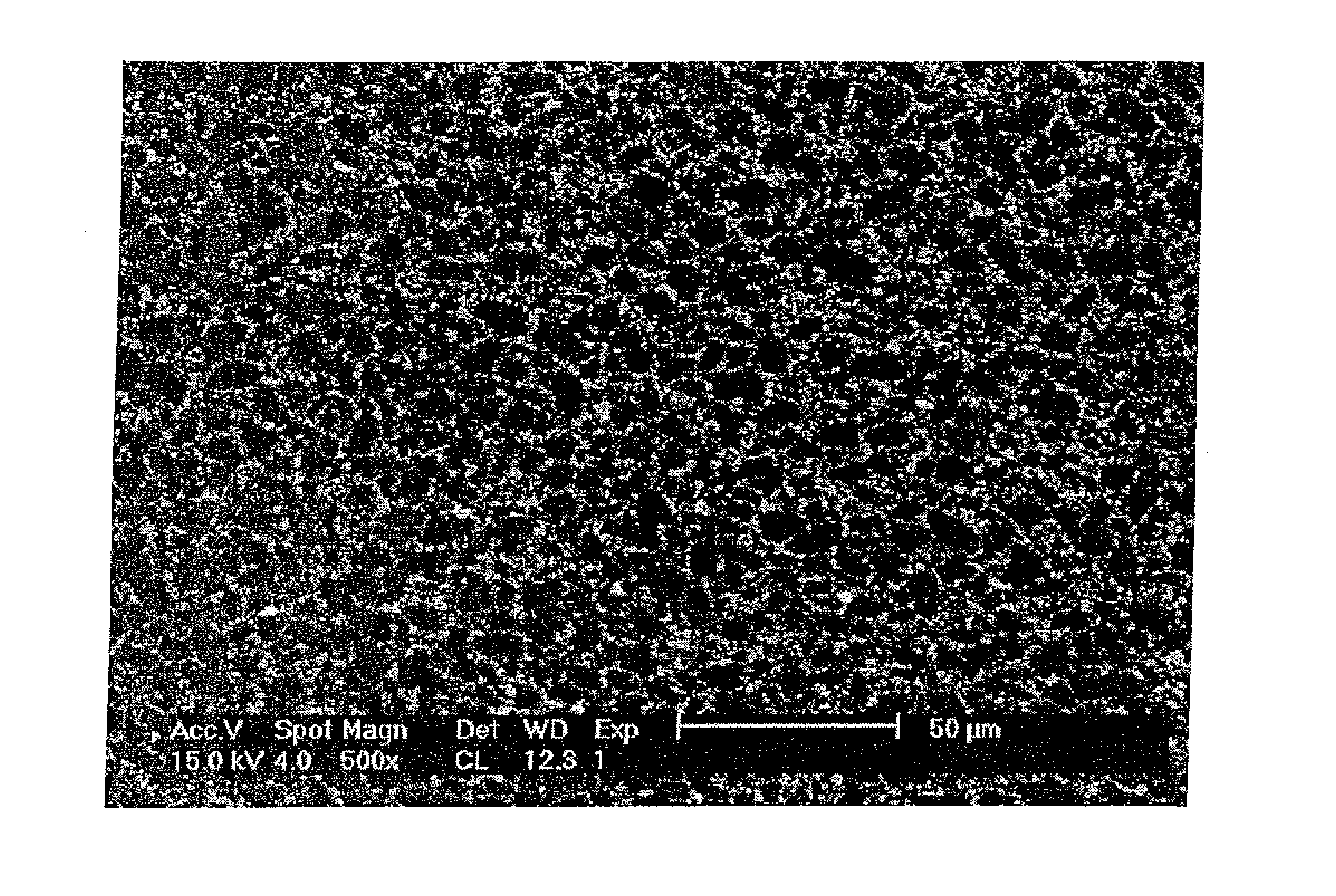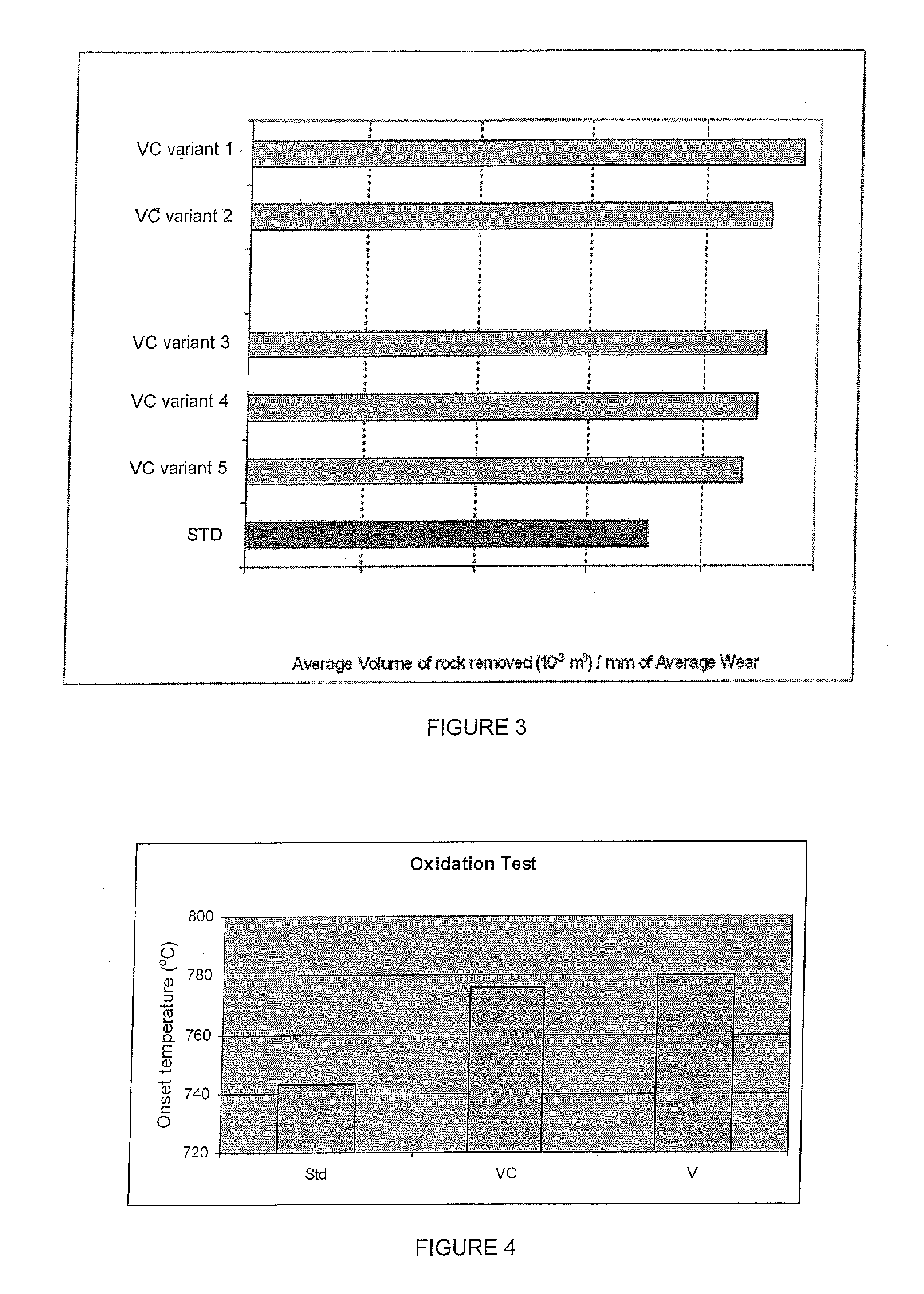Polycrystalline diamond (PCD) materials
a technology of polycrystalline diamond and pcd, which is applied in the direction of crystal growth process, ceramic layered products, layered products, etc., can solve the problems of reducing the properties of reducing wear resistance, toughness, oxidation resistance and thermal stability, etc., and achieve excellent oxidation resistance, wear resistance and thermal stability. , the effect of excellent oxidation resistan
- Summary
- Abstract
- Description
- Claims
- Application Information
AI Technical Summary
Benefits of technology
Problems solved by technology
Method used
Image
Examples
example 1
[0042]A mixture of 3 mass % vanadium carbide and 2 mass % cobalt powder was initially ball milled for 1 hour in order to form a uniform mixture. A bimodal distribution of diamond particles (average particle sizes of 2 microns and 12 micron) was then added stepwise to the mix and the mixture was further ball milled. In total, the overall mixture was ball milled for 4.5 hours. Scanning electron microscopy (SEM) showed the resultant mixture to be homogeneous. The mixture was then backed with a cemented tungsten carbide substrate and treated in a vacuum furnace to remove any impurities. The green state product was subjected to high pressures and temperatures at which diamond is thermodynamically stable to produce a composite diamond compact comprising a layer of PCD bonded to a cemented carbide substrate.
[0043]SEM analysis (FIG. 1) showed the presence of diamond intergrowth in the PCD layer. The dark regions in the micrograph represent the diamond phase, the grey regions represent the b...
example 2
[0048]A mixture of 5 mass % vanadium metal and 12 micron diamond particles was ball milled for 2 hours in order to form a uniform mixture. Scanning electron microscopy (SEM) showed the resultant mixture to be homogeneous. The mixture was then backed with a cemented tungsten carbide substrate and treated in a vacuum furnace to remove any impurities. The green state product was then subjected to high pressures and temperatures at which diamond is thermodynamically stable in order to obtain a composite diamond compact comprising a layer of PCD bonded to a cemented carbide substrate.
[0049]SEM analysis (FIG. 5) showed the presence of diamond intergrowth, the diamond phase, in the PCD layer. EDS analysis showed that the presence of vanadium and / or tungsten in the binder pools interspersed through the diamond phase. The presence of vanadium in the sintered compact was further confirmed by XRF analysis.
[0050]The composite diamond compact of this example was subjected to an abrasion resistan...
PUM
| Property | Measurement | Unit |
|---|---|---|
| particle size | aaaaa | aaaaa |
| particle size | aaaaa | aaaaa |
| size | aaaaa | aaaaa |
Abstract
Description
Claims
Application Information
 Login to View More
Login to View More - R&D
- Intellectual Property
- Life Sciences
- Materials
- Tech Scout
- Unparalleled Data Quality
- Higher Quality Content
- 60% Fewer Hallucinations
Browse by: Latest US Patents, China's latest patents, Technical Efficacy Thesaurus, Application Domain, Technology Topic, Popular Technical Reports.
© 2025 PatSnap. All rights reserved.Legal|Privacy policy|Modern Slavery Act Transparency Statement|Sitemap|About US| Contact US: help@patsnap.com



